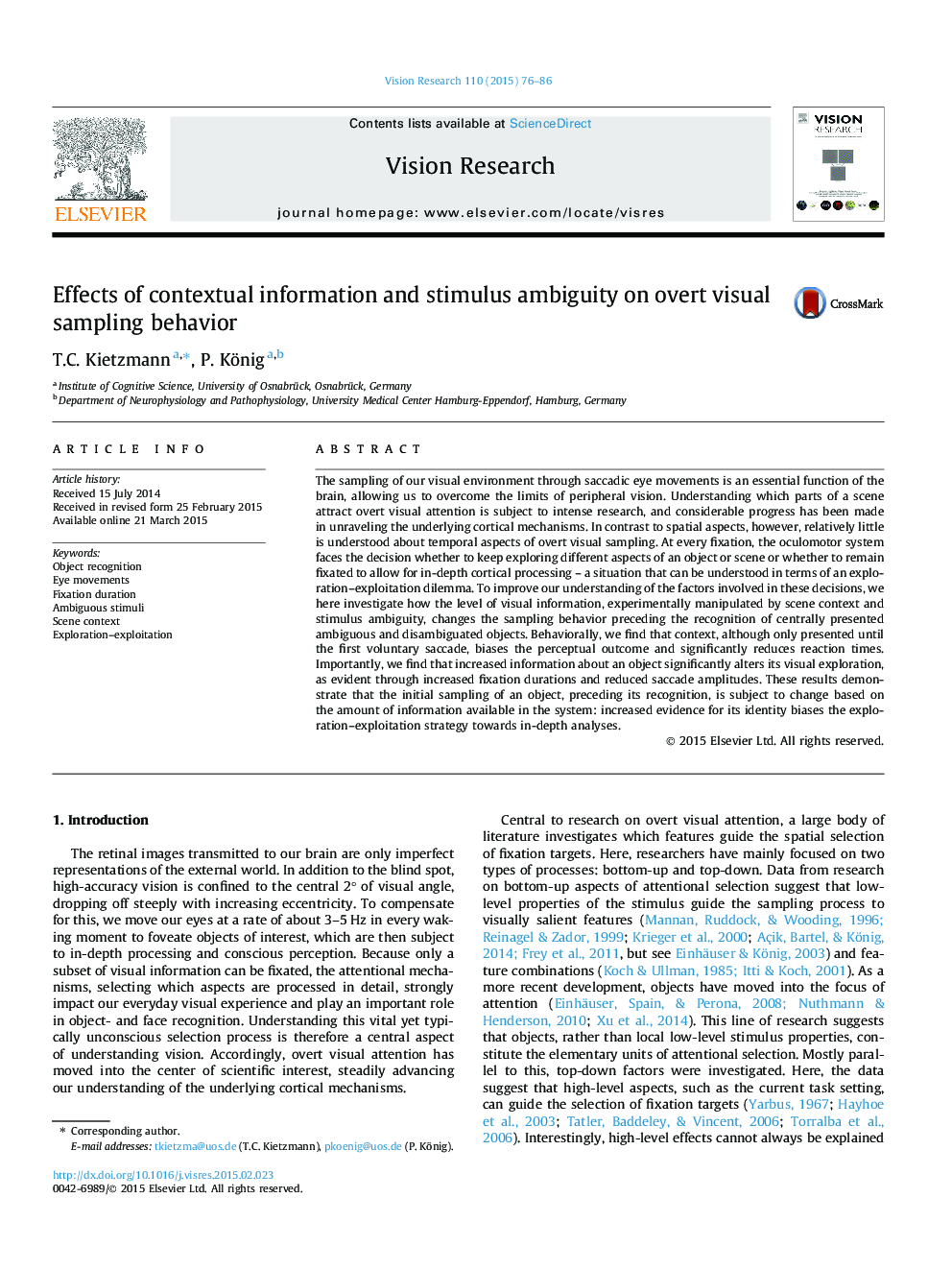| Article ID | Journal | Published Year | Pages | File Type |
|---|---|---|---|---|
| 6203225 | Vision Research | 2015 | 11 Pages |
â¢Increased information changes the initial overt visual exploration of objects.â¢Contextual scenes lead to shorter reaction times, yet longer fixation durations.â¢Fixation durations show a systematic relationship with evidence at a given location.â¢These effects can be understood in terms of changed exploration-exploitation behavior.
The sampling of our visual environment through saccadic eye movements is an essential function of the brain, allowing us to overcome the limits of peripheral vision. Understanding which parts of a scene attract overt visual attention is subject to intense research, and considerable progress has been made in unraveling the underlying cortical mechanisms. In contrast to spatial aspects, however, relatively little is understood about temporal aspects of overt visual sampling. At every fixation, the oculomotor system faces the decision whether to keep exploring different aspects of an object or scene or whether to remain fixated to allow for in-depth cortical processing - a situation that can be understood in terms of an exploration-exploitation dilemma. To improve our understanding of the factors involved in these decisions, we here investigate how the level of visual information, experimentally manipulated by scene context and stimulus ambiguity, changes the sampling behavior preceding the recognition of centrally presented ambiguous and disambiguated objects. Behaviorally, we find that context, although only presented until the first voluntary saccade, biases the perceptual outcome and significantly reduces reaction times. Importantly, we find that increased information about an object significantly alters its visual exploration, as evident through increased fixation durations and reduced saccade amplitudes. These results demonstrate that the initial sampling of an object, preceding its recognition, is subject to change based on the amount of information available in the system: increased evidence for its identity biases the exploration-exploitation strategy towards in-depth analyses.
